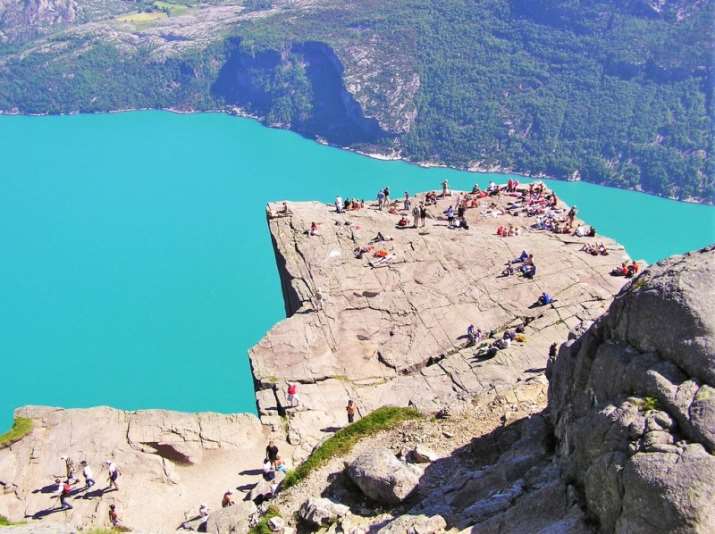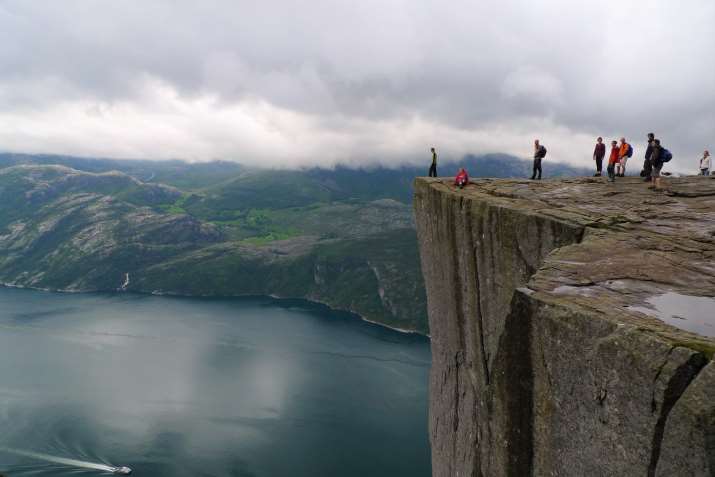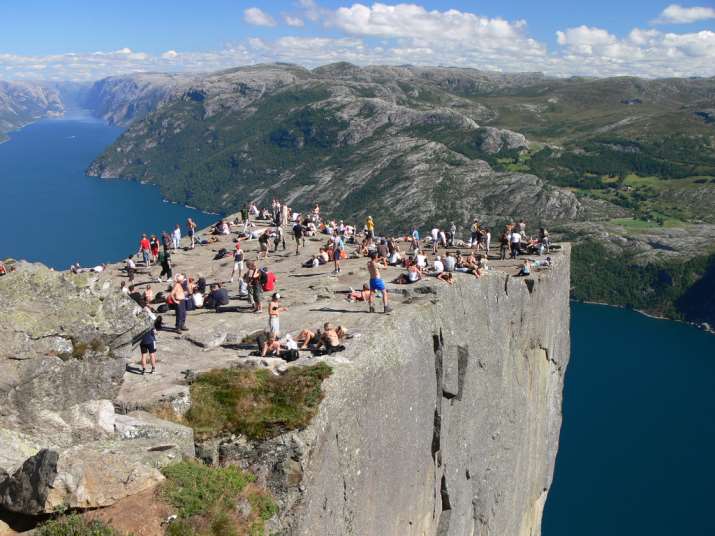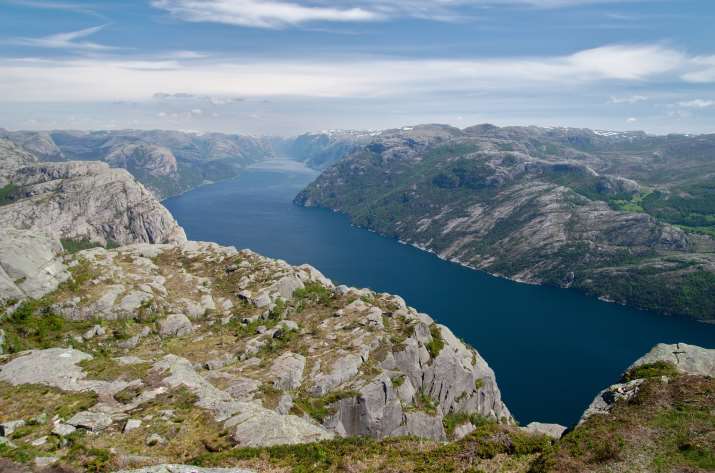Preikestolen aka Preacher's Rock : Norway's Highest Cliff
Norway is known for its picturesque landscapes, which include spectacular cliffs that thrill-seekers love. Norway’s highest cliff, known as the Preikestolen or the Pulpit Rock (Preacher’s Rock) is one of the most popular and well-loved attraction to enjoy the majestic views of nature in this side of the world.
This is a 25 square meter natural plateau rock formation that towers over 604 meters above sea level and provides spectacular views of the Lysefjord. It is visited by over 200,000 tourists yearly. It is said that the cliff was formed way back in the ice age a thousand years ago.

The splendor of the Pulpit Rock has been preserved in its most natural form that there are no guardrails on the edges, making it insanely dangerous and exciting for adrenaline junkies. Just like most natural attractions in Norway, the Pulpit Rock is open all year round, even during winter although climbing during very cold months are highly discouraged.
The Preikestolen is situated in Ryfylke in the Western region of Norway, which is about 25 kilometers away from Stavanger. The starting point of most treks to the cliff is in Stavanger. From Stavanger, the start of the trail is an hour by car or ferry boat. The ferry will take tourists to the other side of the fjord, a place called Tau. The ferries run frequently, approximately every hour. Tickets to reach Tau are sold there for about 250 NOK (local currency, about $42 or EUR32), and buying tickets in advance is usually not necessary. The ferry ticket usually comes with another ticket for the bus that will take you from Tau to the car park where the start of the walking trail is located.

The hike to reach the top of the cliff takes about two hours from the parking facility at Stavanger. Of course, the actual time it takes will depend on the experience and fitness level of the hiker. The hike is fairly easy although occasional steep areas are to be encountered. Delays in the hike are frequently caused by traffic on the trail, due to the sheer number of hikers that climb here, especially during peak seasons. It is usually most busy during the summer season from the months of April through October when the weather is warm and comfortable. Sturdy, comfortable shoes and rain gears are recommended when hiking. The rail can get slippery during rainy and cold seasons, so extra precaution is necessary.
In mid-June to mid-August, there is a tourist ferry that goes from Lauvvik to Lysebotn that passes by just beneath Preikestolen and is usually recommended for those who would like to reach the cliffs through an easier but more expensive route.
There are several options for accommodation in the Ryfylke region that will allow tourists to enjoy their stay in the area to the fullest. There is a campground near the rock formation with cabins that many climbers and trekkers occupy. There is also a lodge at Preikestolhytta, found at the beginning of the hike area. Tourists can also choose to stay in Stavanger as the city offers a wider range of accommodations to choose from. The city itself has many tourist attractions, including a museum.
More Pictures

